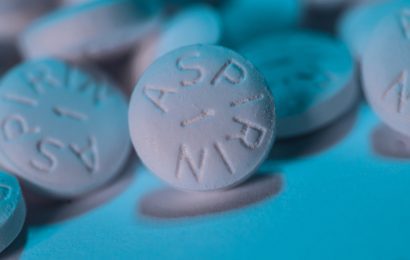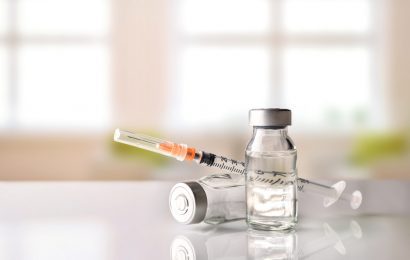People with diabetes often have a number of coexisting health problems. So along with insulin or other diabetes medications, additional drugs are often needed to control these problems — statins for high cholesterol, diuretics or ACE inhibitors for high blood pressure, antidepressants for depression or neuropathy pain, and a daily aspirin to prevent a heart attack. But some drugs are not supposed to be taken simultaneously, and doctors and pharmacists don’t always notice when a person is taking dangerous or risky drug combinations.
What can happen to you if you take several drugs that are not supposed to be taken together? This article explains why and how medicines can interact and what a drug interaction may mean for you and your health care.
The scope of the problem
Adverse drug events cause an estimated 6.5 percent of unplanned hospital admissions in the United Kingdom, and the rate in the U.S. is assumed to be similar or greater. Some of these events are unpredictable, but most can be anticipated and prevented. Many issues are due to drug-drug interactions, and despite the use of computerized prescription checking, they still are a major cause of hospitalization and death. These typically occur in the elderly and in people with multiple prescriptions.
Many people take multiple drugs to treat a variety of illnesses. People with Type 2 diabetes, for example, often have other conditions, such such as depression, heart failure, a previous heart attack, chronic kidney disease, atrial fibrillation, COPD, rheumatoid arthritis, dementia, or high blood pressure. This means that several other medications besides their diabetes drugs will need to be taken. As the number of medicines increases, the probability that a person will take two prescribed drugs that may interact with one another increases. In one study, the authors identified 133 potentially serious possible drug interactions for Type 2 diabetes, of which 25 (19 percent) involved one of the four drugs recommended as first-line treatments for all or nearly all patients.
Not all potential drug interactions result in a bad outcome, but drug interactions contribute to an increased risk of an adverse event occurring. In fact, up to 7 percent of people who are admitted to hospitals end up there because of an adverse drug reaction.
With all of the drugs on the market today, how many drug interactions are possible? The answer is quite a few. Fortunately, while there are a lot of potential drug interactions, not all of them result in adverse drug reactions. Why this is so is not well understood but may include underreported or unrecognized adverse drug events by the people taking them or their physicians, people simply not taking their medicines consistently, individual differences in tolerance of drug effects, and individual variations in the blood levels of any of the potential interacting drugs.
Why and how drugs interact
When you take a drug, most of it must be absorbed into your bloodstream and go to the particular part of the body it needs to affect. After it has produced its effect, the body needs to get it out of the system. Interference with any of these steps, whether drug-induced or from physiological problems, can produce unwanted effects. The most common form of drug interaction occurs when one drug interferes with another drug’s elimination from the body.
Drugs are mainly eliminated from the body by two organs, the liver and the kidney. The kidney rids the body of some drugs in the urine. The liver rids the body of some drugs in the bile via the gallbladder. Both the kidney and the liver sometimes need to metabolize, or chemically change, drugs into forms that are more easily eliminated from the body.
The liver acts as a gatekeeper between the gastrointestinal tract and the rest of the body because it is the first major organ to receive blood (and the drugs absorbed into the blood) from the intestines. In fact, the liver can metabolize some drugs so quickly that after taking one of these drugs by mouth, only a small fraction of the drug is left to travel through the body. But how do your liver and kidneys “know” how to metabolize drugs they’ve never seen before? Humans didn’t suddenly develop ways to eliminate or modify drugs. Rather, through the course of our evolution as a species, our livers now have a large family of enzymes (proteins that modify or metabolize chemicals) to deal with a range of substances. Probably originally developed and retained to deal with foreign chemicals in food or the environment, these enzymes now also serve to break down drugs.
The enzymes come in many different types but the largest family is known as the cytochrome P450’s (CYP450). More than a thousand CYP450s have been identified in various species; humans alone have more than 50 distinct genes for CYP450s. These enzymes are very old and have been conserved in the evolutionary sense, meaning that many plants and bacteria have similar enzymes to those now found in humans. Several individual enzymes metabolize the majority of drugs available today. The CYP450 enzymes that are most commonly involved in drug metabolism are CYP3A4, CYP2D6, CYP2C9, CYP2C19, CYP1A2, and CYP2E1. CYP3A4 is the most important enzyme in drug metabolism due to its abundance in the liver and the intestine and its ability to modify many different types of chemicals and drugs. CYP3A4 is involved in the metabolism of more than 60 percent of all drugs that are on the market today.
Inhibition of metabolism
When a drug blocks or inhibits one or more of these CYP450 enzymes, it interferes with the elimination of drugs that are normally metabolized by the blocked enzyme(s). If a drug cannot be metabolized, it is not eliminated as quickly as it should be and can accumulate in the bloodstream, resulting in higher blood levels of the drug. The blocked drug also stays in the bloodstream longer than expected. Both of these situations can lead to trouble.
The once-popular antihistamine terfenadine (Seldane) was removed from the U.S. market because it caused potentially fatal heart rhythms when given in combination with drugs that block its metabolism. It was found that terfenadine was normally broken down in the body by CYP3A4, but when a CYP3A4-blocking drug such as ketoconazole (an antifungal drug) was given at the same time, the levels of terfenadine were both higher in the bloodstream and higher for a longer time. The high levels caused the heart problem, and because it was difficult to prevent the potentially harmful mixture of drugs, terfenadine was removed from the market.
Induction of metabolism
Some drugs can increase the levels of a CYP450 enzyme in the body by interacting with the genes for that enzyme. The increased levels of enzyme serve to metabolize drugs faster than normal, which reduces the blood levels of medicines metabolized by that enzyme, making them less effective. This process is called induction, and the drugs that serve to increase the amount of enzymes are called inducers.
Inhibition of excretion
The diabetes drug metformin, on the other hand, is not metabolized by enzymes and is eliminated unchanged in the urine. This means that it is not susceptible to other drugs that inhibit CYP450 enzymes. However, metformin concentrations in the body can be increased by drugs that inhibit its excretion from the kidneys, such as cimetidine (Tagamet).
Synergism
Drugs can also interact when they have the same intended effect or complementary effects. For instance, this can occur when several drugs are given to prevent blood clots from forming. Although both aspirin and warfarin (Coumadin) are intended to prevent blood from clotting inappropriately, in combination they can increase the risk of bleeding.
Specific drug interactions
This table lists common drugs used to treat diabetes as well as other drugs commonly used by people with diabetes that could potentially cause interference. The list is not meant to be comprehensive; there are other drugs used by people who have diabetes that may cause interactions. (For more comprehensive lists, see the websites mentioned later in the article.)
You may remember the recall of the statin cerivastatin (Baycol), but perhaps you haven’t heard how the drug interaction in that case relates to a diabetes drug. The triglyceride-lowering drug gemfibrozil (Lopid), an inhibitor of CYP2C8, was connected with an increased incidence of muscle breakdown (rhabdomyolysis) as well as deaths when taken with the cholesterol-lowering drug cerivastatin. The combination causes cerivastatin levels in the blood to increase by up to 600% on average because cerivastatin is usually metabolized by CYP2C8 and CYP3A4. Cerivastatin was removed from the market because of the risks.
The same mechanism appears to be occurring with the combination of repaglinide (Prandin) and gemfibrozil and with rosiglitazone and gemfibrozil. Repaglinide is usually broken down in the body by CYP2C8 and CYP3A4. Gemfibrozil’s inhibition of the CYP2C8 enzyme appears to result in increased levels of repaglinide in the blood. The levels are increased so much that on average they essentially convert the dose taken into one 800% higher. When repaglinide is given in combination with gemfibrozil and itraconazole (Sporanox, an antifungal drug and CYP3A4 inhibitor), the increase becomes even more profound (up to 1,940 percent). If your usual dose is a 1-milligram tablet of repaglinide, the three-drug interaction would potentially give you the same blood levels of repaglinide as if you had taken 19 tablets, an overdose rather than the intended dose. Gemfibrozil’s CYP2C8-blocking effect also seems to be behind its ability to increase levels of rosiglitazone when the two are taken together.
Why did this take so long to figure out and why was this not understood before repaglinide was put on the market? Although the U.S. Food and Drug Administration (FDA) requires new drugs to undergo studies of potential drug interactions before they can be approved, it’s difficult to test a new drug against every known drug, so a method was devised to help target the most likely interactions to study. The method that the FDA and pharmaceutical companies came to rely on is done in vitro (in test tubes) with human enzymes (cloned and expressed in cell culture). The most common human enzymes are used in these studies, and CYP2C8 is not usually one of them. It was not until very recently that this enzyme was found to be blocked by gemfibrozil. It has also not been the practice lately to do interaction studies with more than one drug at a time, even if the blocking of two or more enzymes simultaneously would have potentially significant consequences. The findings from the cerivastatin–gemfibrozil, repaglinide–gemfibrozil, and rosiglitazone–gemfibrozil interactions may spur both the FDA and drug companies to look much closer at how drug interaction studies are done.
Are you at risk?
With all of these potential interactions, how do you find out if you may be at risk? Start by consulting your physician and your pharmacist. Bring a list of all of the drugs you take (or simply bring the drugs themselves), including prescription drugs, over-the-counter drugs, and any supplements, herbal or otherwise, to a doctor appointment or to your pharmacy. Ask your doctor or pharmacist to look over your list for any potentially dangerous combinations.
You can also learn more about drug interactions on the following website of the FDA: www.fda.gov/cder/consumerinfo/druginteractions.htm.
If you are interested in much more detailed information, look up the following Indiana University website, http://medicine.iupui.edu/flockhart, which has lists reflecting both basic science research as well as information intended more for physicians. It also links to the National Library of Medicine’s PubMed database, where you can view and download abstracts and articles of published research.
Be careful about relying on commercial Internet sources for drug information. Several Internet drugstore sites that I evaluated did not list repaglinide and gemfibrozil or rosiglitazone and gemfibrozil as potentially interacting drugs.
Adverse drug effects are very common and represent a large part of the reasons that people visit doctors’ offices, emergency rooms, and eventually hospitals. Don’t hesitate to notify your doctor if you think you are experiencing a drug side effect or to ask about potential drug interactions. If you see different doctors for different medical conditions, one may not be aware of what the others have prescribed for you. Similarly, if you get different prescriptions filled at different pharmacies, no one pharmacist will have access to all of your information, and potential interactions may be missed. For this reason, it is recommended that people fill all their prescriptions at one pharmacy, if possible. In addition, maintain a list of all of your medicines and update it when one is added or removed. Review your list with your doctor or pharmacist regularly, particularly when you begin taking a new medicine.
Want to learn more about the role of medicines in treating diabetes? Read diabetes educator Amy Campbell’s eight-part series on diabetes drugs, covering metformin, sulfonylureas, meglitinides, thiazolidinediones, DPP-4 inhibitors, SGLT2 inhibitors, alpha-glucosidase inhibitors, bile acid sequestrants and dopamine receptor agonists, non-insulin injectable diabetes medications, and insulin.





